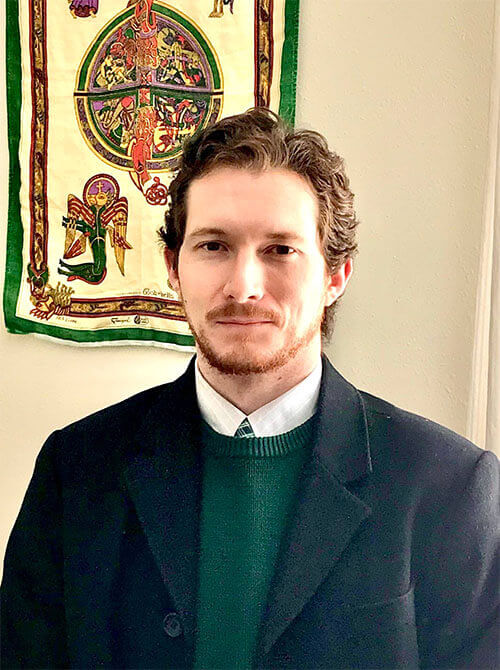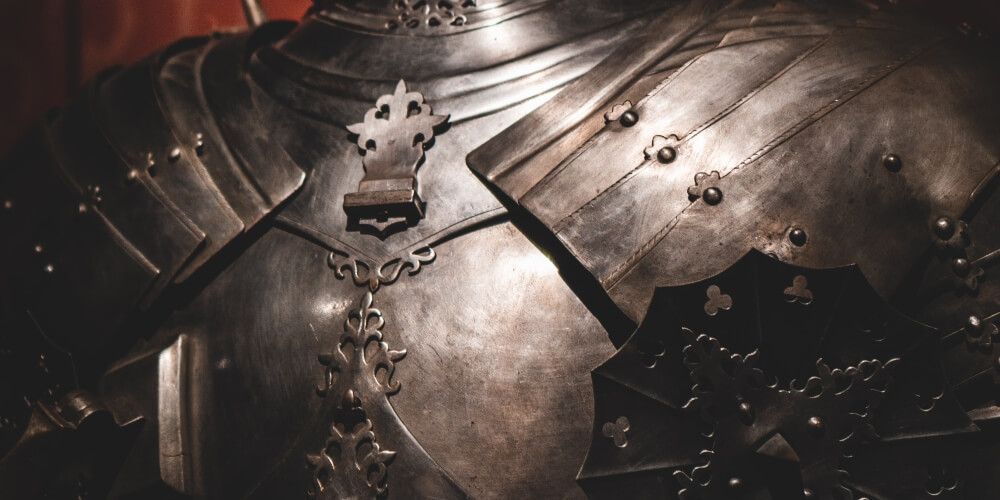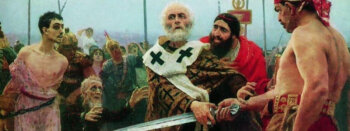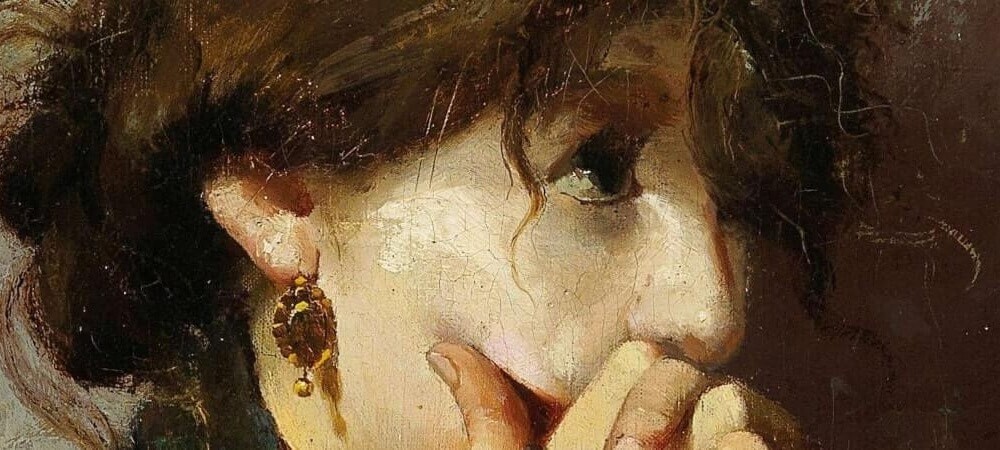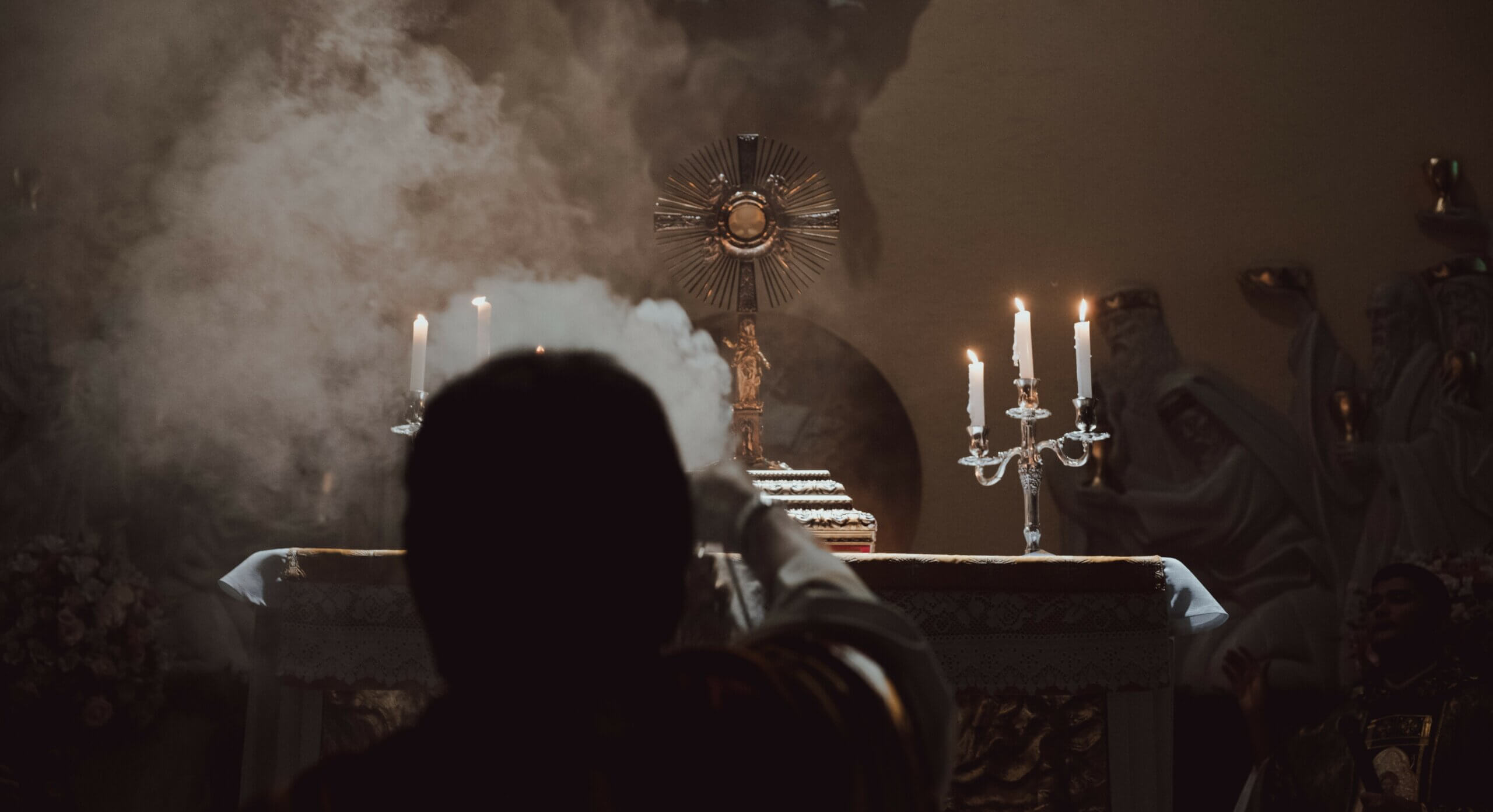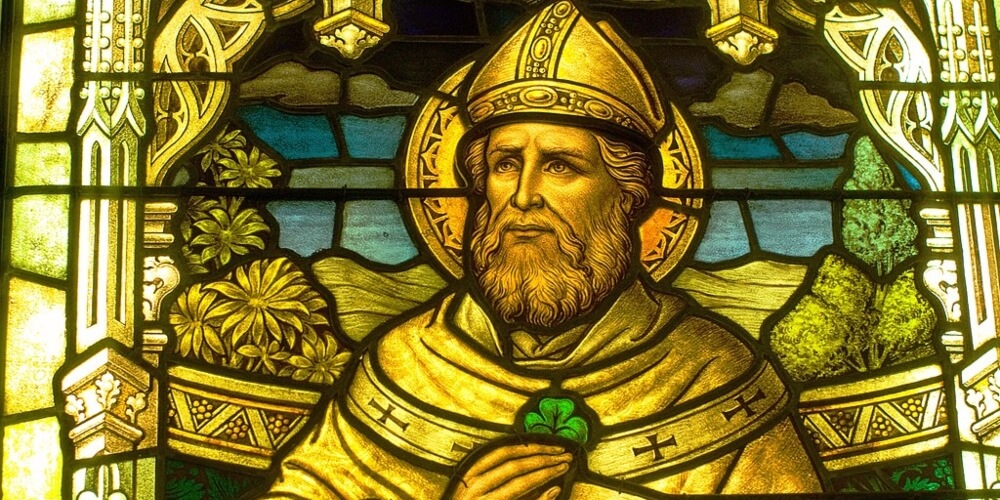
When rivers run a luminous shade of lime, heads sport emerald-green hair, and edible confectionaries turn a brilliant jade, you know that only one day of the year can be responsible for all this viridity: it’s St. Patrick’s Day!
From wielding a shamrock to scaring the living daylights out of nearby serpents, St. Patrick stands as a striking, yet intriguing figure.
Many are familiar with the significance of the shamrock as an analogy for the Holy Trinity, or the legend that the holy man drove snakes out of Ireland by the grace of God.
These, however, are not the only unusual tales connected to this singular man’s life.
The Real St. Patrick
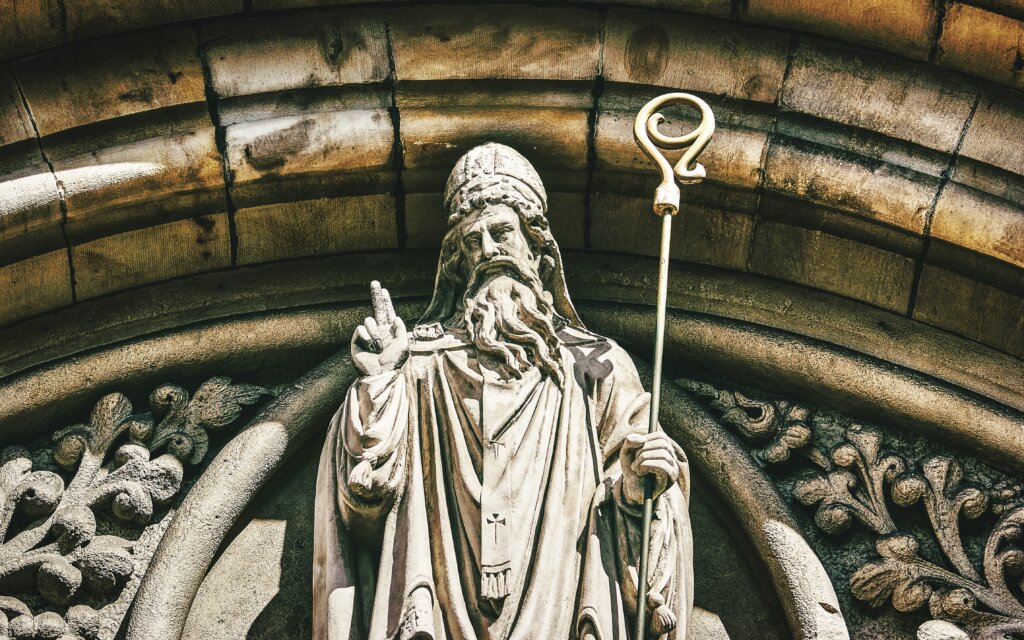
Patrick’s story winds through tall tales, reverent hagiographies, and historical accounts—each offering a unique lens with which to read his remarkable journey.
He was more than just the gentle soul so often depicted in stained glass windows or picture books. While he was almost certainly gentle as needed, he was also a determined man on a mission: a fearless missionary in enemy territory willing to serve and guide his new flock, and protect and defend them as needed.
He was a man of action whose deeds influenced the course of history in Eire and subsequently the entire earth. For the sake of a nation’s souls, he strove against druids; for the sake of his God, he challenged kings; and for the sake of us all, he kindled the undying torch of the Faith.
Naturally, it is the early life of this compelling character that is best known, owing largely to the various hagiographies and biographies—and even to his own words, related to us in his Confessio.
For those who are unfamiliar with his early life, Patrick was born to Calpurnius and Concessa in the British Isles near the end of the reign of the Roman empire. He was not Irish, as popularly believed.
While the exact time and place are unknown, it is believed that Patrick was born around the early 400s. England, Scotland, and Wales have all claimed to be his birthplace.
When he was sixteen, Patrick was captured by Irish pirates and sold into slavery. For six years he lived in their strange land, tending sheep.
His faith—which by his own account had been lax at best—grew strong and flourished in spite of the hardships he faced.
At last, he heard a celestial voice telling him that he would be reunited with his home and family and that a ship was ready to take him there. Patrick escaped, found the boat, and after a few harrowing exploits, finally returned to his native land.
St. Patrick Brings Christ to the People that Enslaved Him
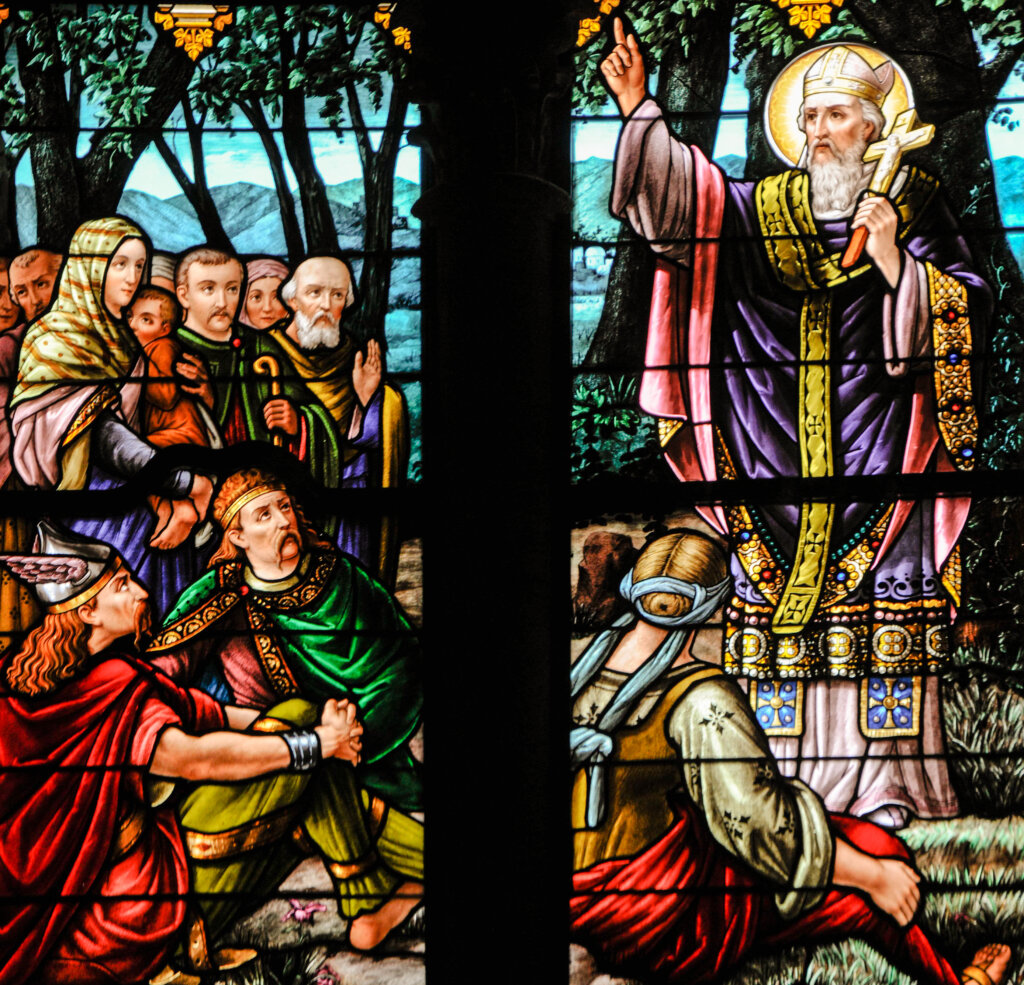
Had his tale ended there, it would have been a fine one; Celtic raiders and daring liberations are nothing to scoff at. But Patrick was not content to keep his newfound zeal to himself.
After some years of study he was ordained a priest, then became a bishop and, uniting his will with God’s, went back to the island of his captivity to spread the good news to the people of Hibernia who had once enslaved him.
This is where the stuff of legends begins.
A Country Enslaved to Satan
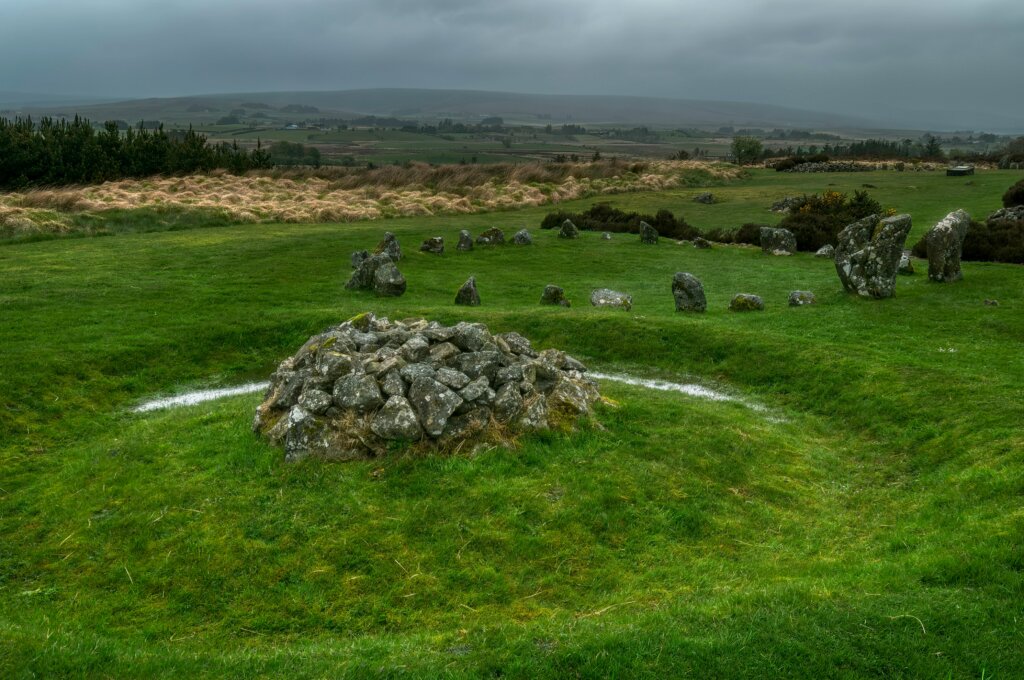
For all the beauty that the Irish countryside can boast, in Patrick’s day it was also a nation of dark practices and evil horrors, unbecoming to its natural God-given state.
The ancient Celts had a reputation for being a wild people, but their heathen ceremonies went much further than just strange. There are records of debaucherous rituals that would have made more than a few free-spirited Greek or Roman pagans blush.
And then there were the human sacrifices. While not as widespread a practice compared to, say, the Aztecs, human lives were certainly offered to idols, at least to one in particular.
Patrick himself described their wayward lives in his Confessio: “Never before did they know of God except to serve idols and unclean things…”
Ireland was a land sorely in need of rescuing.
The enforcers of these wicked rites were the druids. Serving as priests, scholars, sorcerers, and advisors to the kings of Ireland, the druids held much sway over the Irish people.
There is an ancient text, The Hymn of Fiacc, that describes how—three years before St. Patrick commenced his evangelization—these same druids prophesied his coming to the High King of Tara, Loegaire mac Neill:
“He comes, he comes, with shaven crown, from off the storm-tossed sea,
His garment pierced at the neck, with cork-like staff comes he,
Far in his house, at its east end, his cups and patens lie,
His people answer to his voice, amen, amen, they cry. Amen, Amen.”
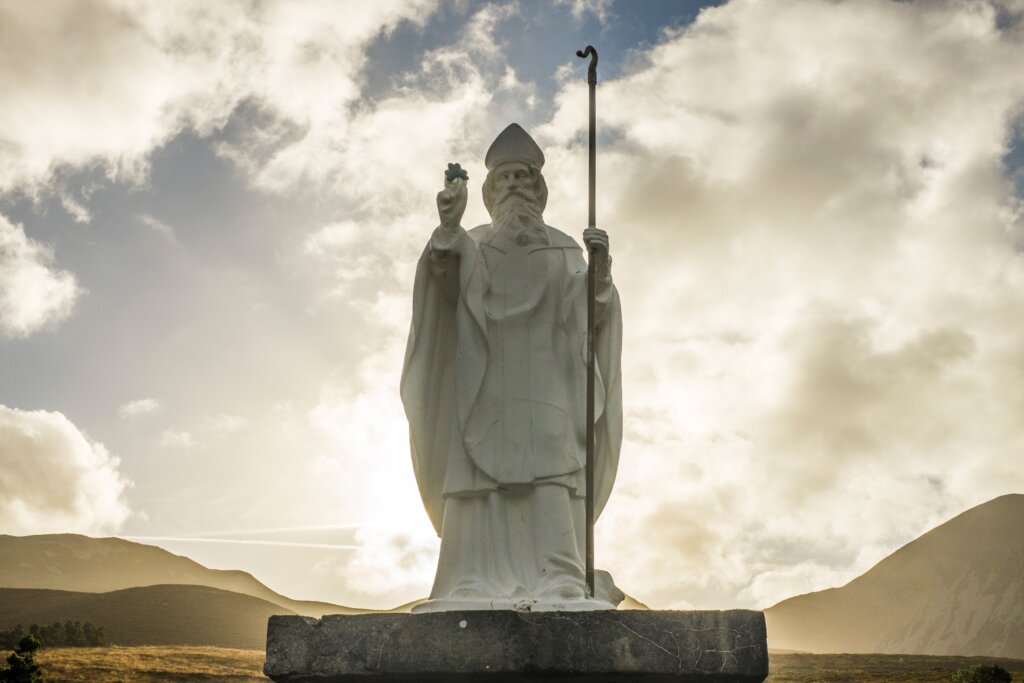
The druids foresaw the faith the bishop would bring, and Patrick knew just where to plant it.
At that time, the city of Tara stood as the royal capital of ancient Eire. The texts of the Vita Sancta Patricii written by Muirchu Moccu Mactheni describe the city as “caput draconis” or “the head of the dragon” and it is here that Patrick was compelled to come. In this instance, the literal translation of “draconis” is “huge serpent.”
Crushing the head of the snake certainly evokes biblical imagery, but it had special significance for the people of Ireland. To further emphasize the words of the oracles themselves concerning the fall of paganism, it is quite telling that many of these ministers of idolatry were often tattooed with images of vipers.
St. Patrick and the Holy Fire
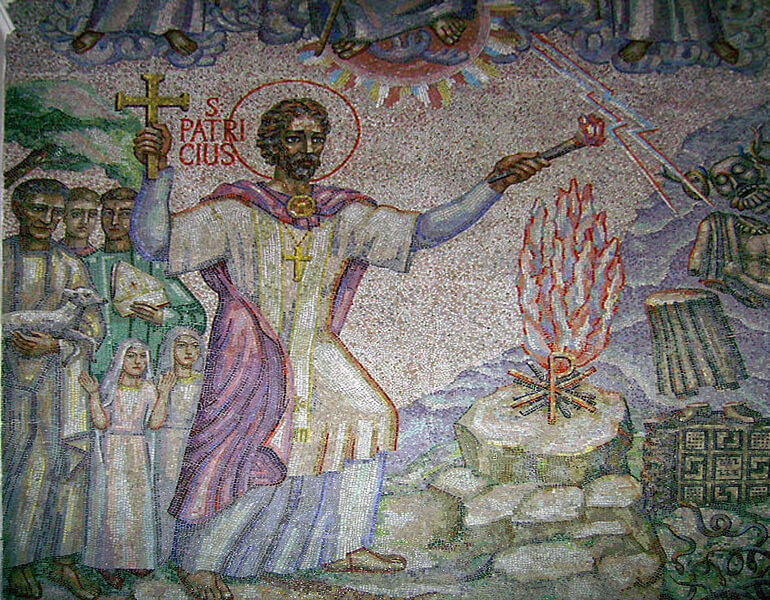
(photo credit: Gavigan 01 at English Wikipedia/CC BY-SA 3.0)
Every spring, the sacred center of all Irish paganism held festivals for the Feast of Beltane. It was a time to honor the gods, pray for a healthy harvest, and celebrate with colossal bonfire rituals.
Beltane was a sacred ritual of the sun, darkness, and fertility, one of the most prestigious occasions of the year. The greatest fire of all would be lit each year on the hill of Tara.
According to custom, every light in the surrounding countryside was extinguished before sunset and it was the king’s duty to kindle the first flame that night in order to obtain fortune and prosperity. All other fires would then be set ablaze from this royal one.
So imagine the incredulity of the king and his druids one year when the darkness was pierced by a light not of their making.
Across the plain of Brega on the hill of Slane a few miles away, Patrick, the man of God, was kindling and blessing an even greater flame: the Paschal fire. At one point unaware of his presence on the island, the attention of the entire kingdom was arrested by the arrival of St. Patrick and with him, the Light of the World.
With this Christian fire, St. Patrick halted paganism in its tracks and issued a statement loud and clear: the Feast of Beltane was to be replaced by Easter, the holiest feast of Christianity.
While the building of the great fire surely must have taken a good deal of strategic preparation, Patrick’s years spent learning the ways of the Irish people during his captivity provided the invaluable experience and forethought needed to execute this brilliant move.
Fr. Francis X. Weiser, author of The Easter Book, wrote that the custom of a Paschal fire preceding the Easter Vigil Mass remained such an extraordinarily beloved tradition among the Irish monasteries that, in following centuries, Pope Zachary approved the practice—after which it was adopted by Christians across the globe. The Paschal Fire remains a cherished custom to this very day, all thanks to St. Patrick.
Oral traditions about Patrick tell us that the frenzied druids consulted with their oracles, spoke with secret stones, and foresaw the future through black magic. Their consensus was that—should they fail to extinguish Patrick’s blaze that night—it would never be quenched but engulf all their fires, and the man who kindled it would irreversibly upset their rule.
Furious, the king swiftly dispatched riders and charioteers to apprehend the instigator. Galloping through the night, the company reached the hill and commanded that the guilty party step forward. Patrick reportedly faced the host with such great courage that his bravery prompted one of the attending druids, Erc mac Dega, to salute him.
Now revered as a saint of the Church, Erc converted on the spot, assisted Patrick in his ministries, and was eventually appointed Bishop of Slane.
The other attendants of King Loegaire made every effort to smother the flames, but to no avail.
At this point, there was little the pagans could do to remedy the situation; thus, after a brief conference, it was agreed that Patrick would meet the king in his halls the following morning.
St. Patrick’s Dangerous Journey to the King’s Palace

Next in the hagiographies there is mention of a marvelous miracle. A drove of deadly assassins lay in wait for Patrick before the royal palace, at the behest of either the anxious king or his nervous druids.
Sensing the unseen peril ahead, the holy man prayed fervently, composing what is now called St. Patrick’s Lorica. The prayer itself is an entreaty for protection from all harm.
One passage of the prayer in particular seems pertinent to both the imminent danger he faced that day as well as dangers that would threaten later on:
“Against every hostile merciless power
Which may assail my body and my soul,
Against the incantations of false prophets,
Against the black laws of heathenism,
Against the false laws of heresy,
Against the deceits of idolatry,
Against the spells of witches, smiths, and wizards,
Against every knowledge that binds the soul of man.”
After this prayer, the Apostle of the Emerald Isle set out with a few brave followers, all of whom placed their trust and lives in the hands of God.
Approaching the king’s stronghold, the company found themselves surrounded by a dense fog. Some say that the druids conjured up the mist to conceal the intended murder; others say that it was sent from heaven to shield them from unfriendly eyes.
In any case, the Christians arrived at the king’s castle unharmed. When the would-be assassins were questioned about their failure to apprehend Patrick, they replied that no living creature was seen on the road, save a herd of deer with a small faun trailing behind them.
The Latin translation for lorica refers to defensive battle armor or a “breastplate” earning it the appropriate and more common title of “The Breastplate of St. Patrick.” Yet according to old Gaelic etymology, lorica translates to “The Deer’s Cry.”
By all accounts, the royal court was surprised at the safe arrival of the bishop and the druids grew desperate. The laws of hospitality in the realm were sacred and, welcome or not, Patrick and his company were invited to dine with the king.
The heathen priests, however, attempted one last trick to dispose of the holy man. A poisoned goblet was offered to him, but after Patrick blessed the cup, the poison did him no harm.
Unable to contain their rage, the evil wizards challenged him to a duel—and Patrick accepted. Loegaire permitted the contest, since it would publicly prove which side was divinely favored.
Spiritual Warfare Between Patrick and the Druids
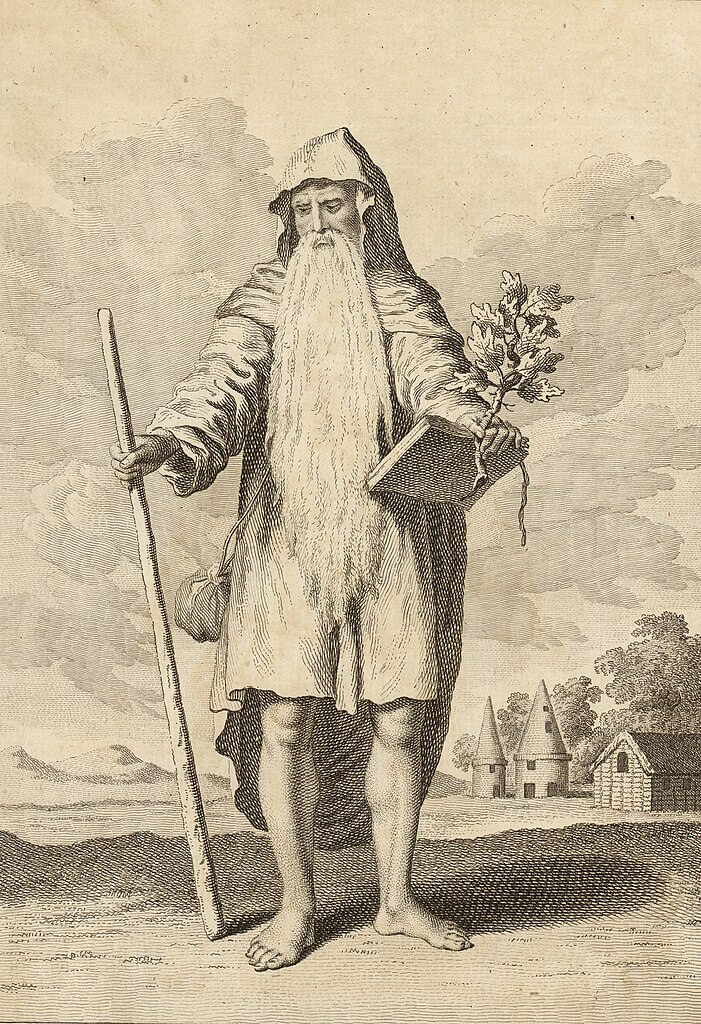
Legend says that several contests took place, each one more spectacular than the last. Christian testimonies draw many parallels between St. Patrick’s duel with the druids and the biblical accounts of Moses contending against the pharaoh’s priests, or Elijah battling the false prophets of Baal.
Patrick’s contests have not been historically verified but few inquiries, however skeptical, deny that they ever took place. Accurate or not, the event remains noteworthy because the incantations of the servants of darkness were always foiled by the prayers of this prince of the Church.
One episode in particular marvelously reveals how a stake was driven into the beating heart of all idolatry in Ireland.
Terrific displays of strength between good and evil that day included violent storms calmed by the intercession of The Almighty and sudden clouds of darkest night dissipated by the warm sunlight from above. Earthquakes and lightning did nothing to shake the resolve of the man sent by God and every curse was countered with blessings.
Even King Loegaire tried his hand at destroying Patrick, but his efforts were met with futility.
Finally, the high priest of the druids, Lochru, spewed venomous blasphemies against God and hurled incantations at His faithful servant. Calling upon his false god and all other unclean spirits, the wizard began to levitate above the terrified throng. He taunted Patrick, uttering spells to destroy him once and for all.
This was by far the most awesome exhibition of power yet seen.
Once more, the bishop entreated God for guidance and guardianship. Then, at Patrick’s command, the demons lifting Lochru fled in fear, dropping him. He fell from a great height, dashing his head against a mighty stone, and was killed. The contest abruptly concluded with Patrick the undisputed victor.
The king reluctantly agreed to convert and granted Patrick the freedom to preach the Catholic Faith throughout all the kingdoms of Ireland.
While it’s possible that the preceding account is fanciful, it is nonetheless an important one.
There, on public display, devil worshippers were not only defeated, but divine justice was served in the downfall of the druid.
Crushing the Head of Satan
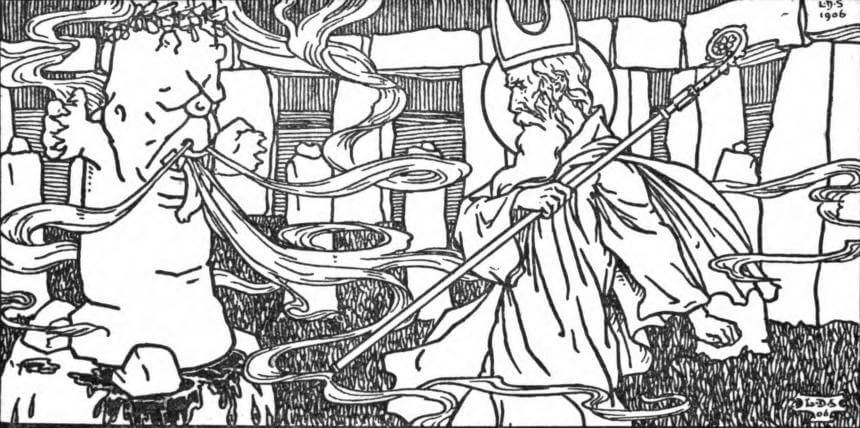
Why does it matter how the druid died? Because his demise exactly matched the way in which the pagan priests’ victims of human sacrifice were killed. The ancient Celts attached much significance to the head of the body, understanding it as the “seat of the soul.” Gaelic warriors were known to carry the heads of their enemies in battle as trophies proving their prowess.
When Irish paganism had reached its summit, heads were carved into sacred stones which supposedly granted visions of the future and forbidden knowledge to cult followers.
There are numerous instances in Celtic history of speaking stone heads, many of which demanded worship in return for favors. The greater the gift offered, the better fortune would be granted; eventually this form of idol worship in Ireland would climax in the horror of human sacrifice.
The entity behind these bloodthirsty idols was hailed as the head of all the Celtic gods: Crom Cruach. King Loegaire proudly professed to adore this god and it is rumored that he never fully abandoned the old pagan ways after accepting baptism from Patrick.
So, when the lead druid of the king of Ireland had his head crushed in the same way that he had committed murders to appease the head of his gods, no magical power is necessary to conclude that this momentous act of God would have lasting ramifications on the pagan world.
Thankfully, perhaps, we know little about Crom Cruach, but what we do know is shrouded in cloudy shadows and bloodstained rock. Ultimately, we know that it was the head of the serpent which was destined to be smashed.
Whereas the larger-than-life characters in Celtic mythology were depicted more like superhuman heroes than actual divinities, Crom never claimed a connection with humanity, and was clearly set apart from the other supernatural figures by his other title of Cenncroithi, “head of the deities.”
While the meaning of the various names of this “god” ( likely a demon, perhaps the devil himself) remain elusive, together they paint a grisly picture. Crom is understood to mean “twisted” or “crooked,” certainly snake-like in nature, while Cruach means mound or stack. Many point to this translation as evidence that it was a fertility deity, evoking the image of a pile of wheat, but it can also be translated as a heap of bodies, or, in other words, carnage. The latter seems a suitable title, given that the main place of adulation of this idol was on the hill of Magh Slécht (mah slaught), the “hill of slaughter.” As if to emphasize its sinister nature, another of its names, Crom Dubh, means “crouching darkness,” conjuring the terror of a black viper ready to strike.
As awful as human sacrifice is, what made the worship of Crom Cruach exceptionally heinous was the fact that the demon of the rock did not simply feed on the blood of mankind, but chiefly the blood of children.
In return, Crom promised bountiful harvests and healthy livestock, much like the Greek Titan Cronus’ method of ensuring the wealth and prosperity of all the land. The ancient poem of the Metrical Dindshenchas states: “For him ingloriously they slew their hapless firstborn with much wailing and peril, to pour their blood round Cromm Cruaich.”
To disobey the demon’s demands meant ruin, banishment, or even death. Whether or not the bloodthirsty monster was directly associated with the spring feast of Beltane remains unclear, but one thing is for certain: St. Patrick knew about this dark idol, and knew that it had to be stopped if the people of Ireland were ever to be set free.
St. Patrick Destroys An Idol and Its Resident Demon
The Book of McGovern, a poem written in the 1300s, mentions the hill of Magh Slécht as a place that made the local women tremble in fear as they passed by. Offering further clues, The Tripartite Life of St. Patrick, written in the 12th century, describes the large stone idol half hidden in shadows of trees, but encrusted with bloody gold and silver metalwork. It was an imposing graven image, taller than most men. The boulder was encircled by twelve other smaller carvings made of bronze and likely enshrined by towering monoliths.
Holy Patrick hastened to this dark place to confront the devil stone. No demon or druid could sway him as he swung his crosier high and struck the idol on the left side of the face, leaving a craggy imprint. The head reeled to the right and the last thing its stony eyes would have seen was the hill of Tara, where the first spark of its inevitable doom had been kindled, before the brave shepherd smashed his staff into its head again, shattering the terrible statue. Its stone shell crushed, the demon emerged seething and cursing through the slime and billowing smoke. By fervent prayer and invocations to the Most High, St. Patrick commanded the dark one to quit the land of Ireland and banished it to the depths of hell.
Pieces of the cursed rock can still be found today. It is known as the Killycluggin Stone in County Cavan, and the place of its finding is considered to be of considerable archeological value. Scientific analysis determined that the rock was indeed bludgeoned with something resembling a sledgehammer and the fragments rolled away from the ancient circle where it long ago stood intact.
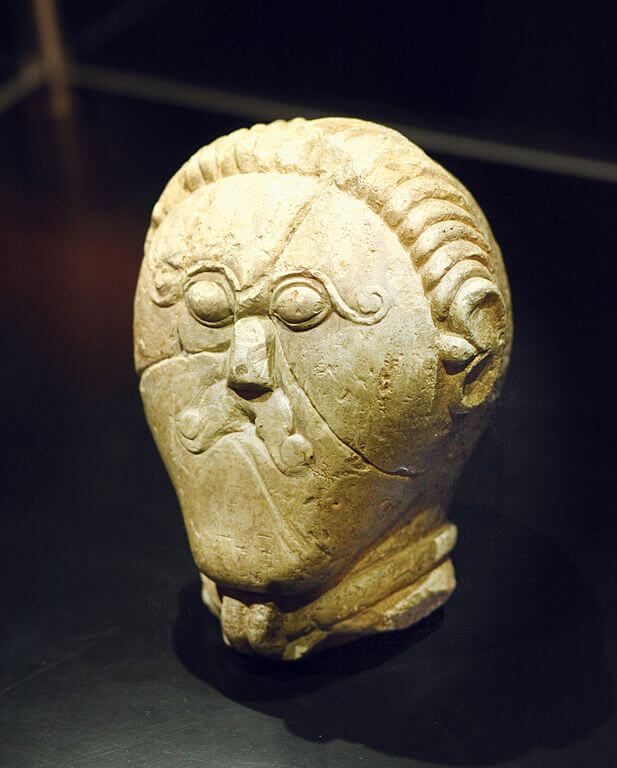
The stone appears to have had anthropomorphic features like hair, as well as many decorative motifs, twisted and serpentine in nature; surely not a coincidence given its snake-branded reputation.
St. Patrick: Legends Abound, But Truth is Found in his Sanctity
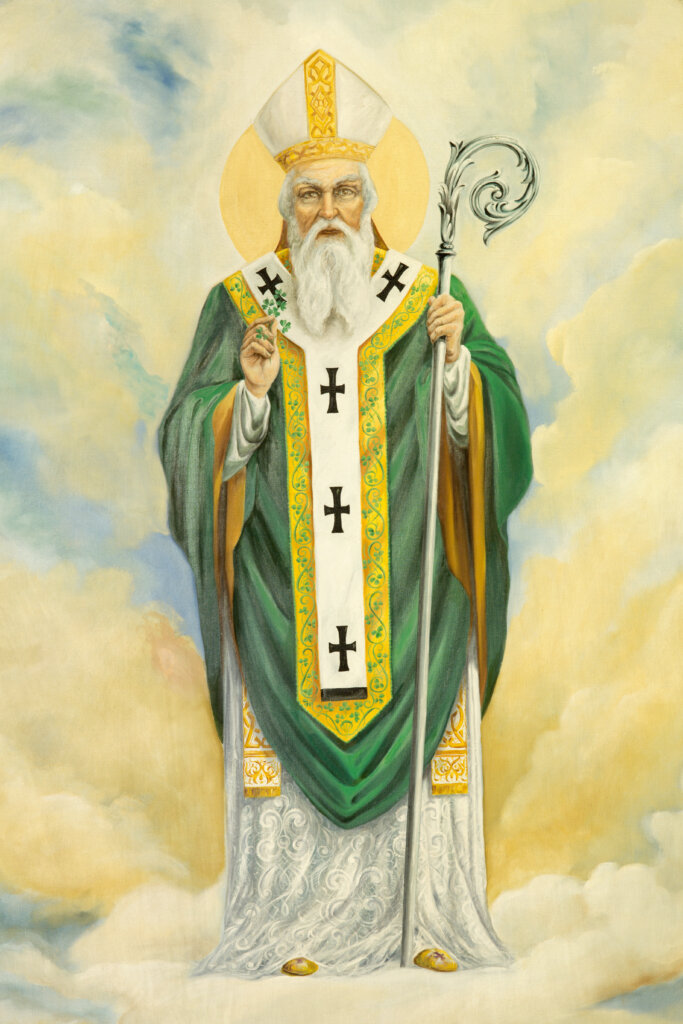
There is a pious legend that claims St. Patrick drove all the snakes out of Ireland. Naturalists, however, suggest there is no scientific basis for slithering reptiles ever having inhabited the Emerald Isle. Perhaps the story of the snakes fleeing before Patrick began as an eyewitness account that grew to a tall tale to mark the epic era during which the saint pulverized Ireland’s idols.
Paganism in Ireland did not vanish overnight, but its life supply had at last been extinguished. Patrick would face many sore tests and trials ahead, yet history has undeniably proven that his heroic and holy efforts forever transformed the people of Ireland, for whom he banished the dreadful darkness of idolatry, plowed the mossy but precious soil of their souls, and planted the seeds of the Christian faith that would grow abundantly and flourish for over a thousand years.
Whether his story comes to us through exaggerated folktales, ecclesiastical biographies, or historical documents, the life and work of St. Patrick will inspire us to faithfully shine the light of Christ in all dark places, embolden us to defend those who cannot protect themselves, and spark in us the desire to emulate his humble and complete trust in the Triune God so that He might make saints of us all.
In truth, St. Patrick’s Day is a feast worthy of celebration—and Patrick himself is a man well worth remembering. Not only if you’re Irish, but perhaps especially so.
